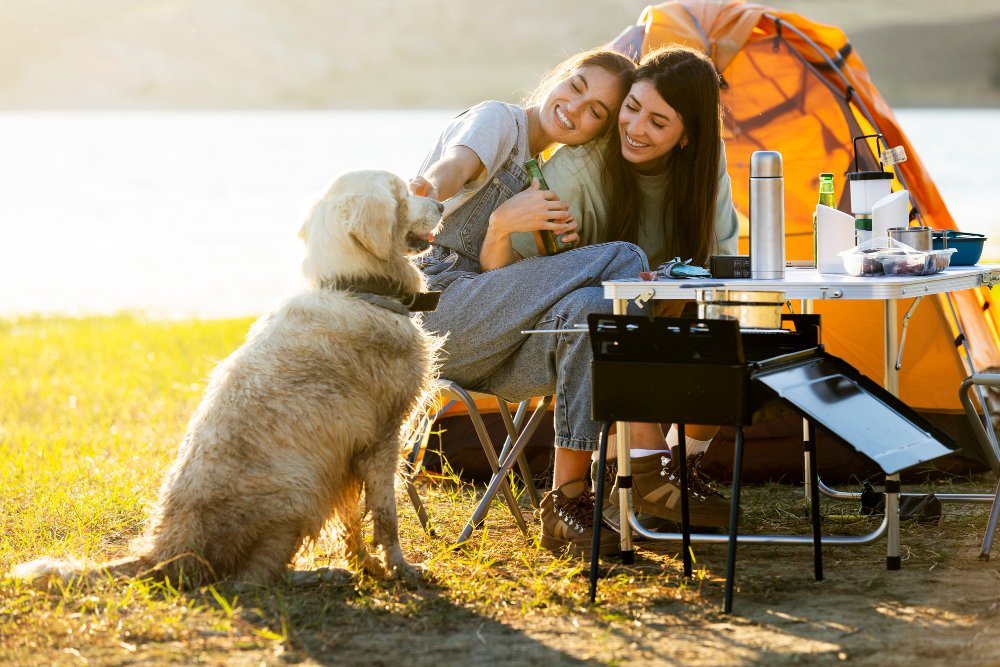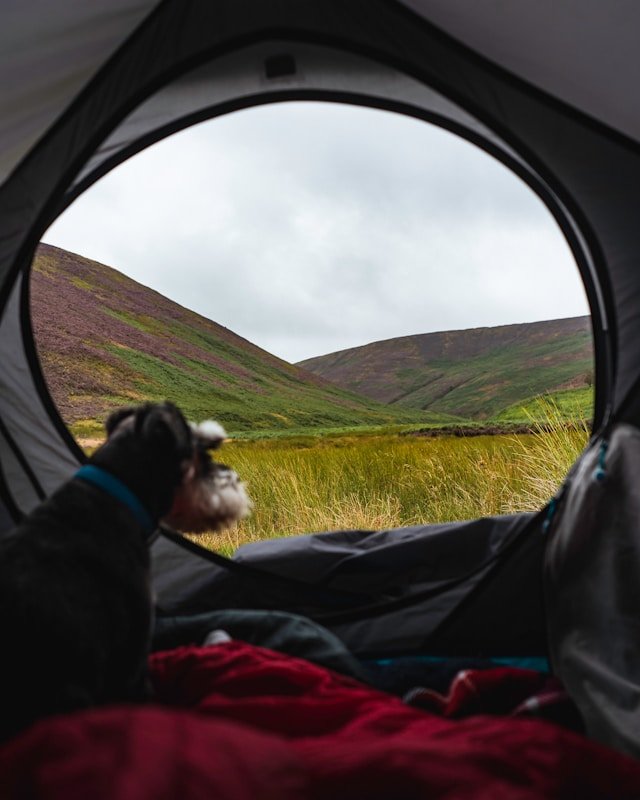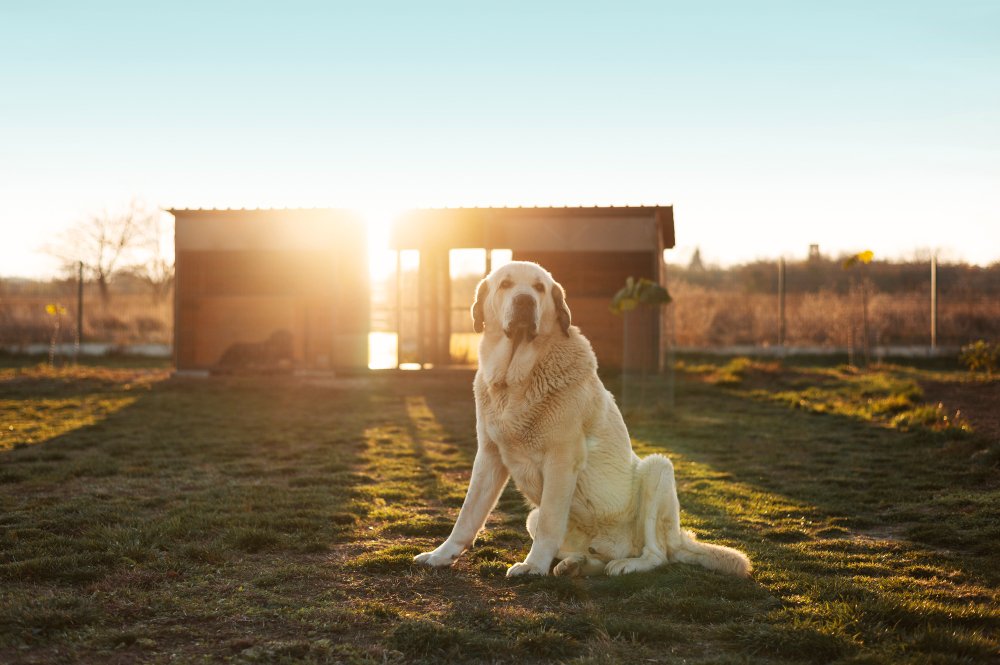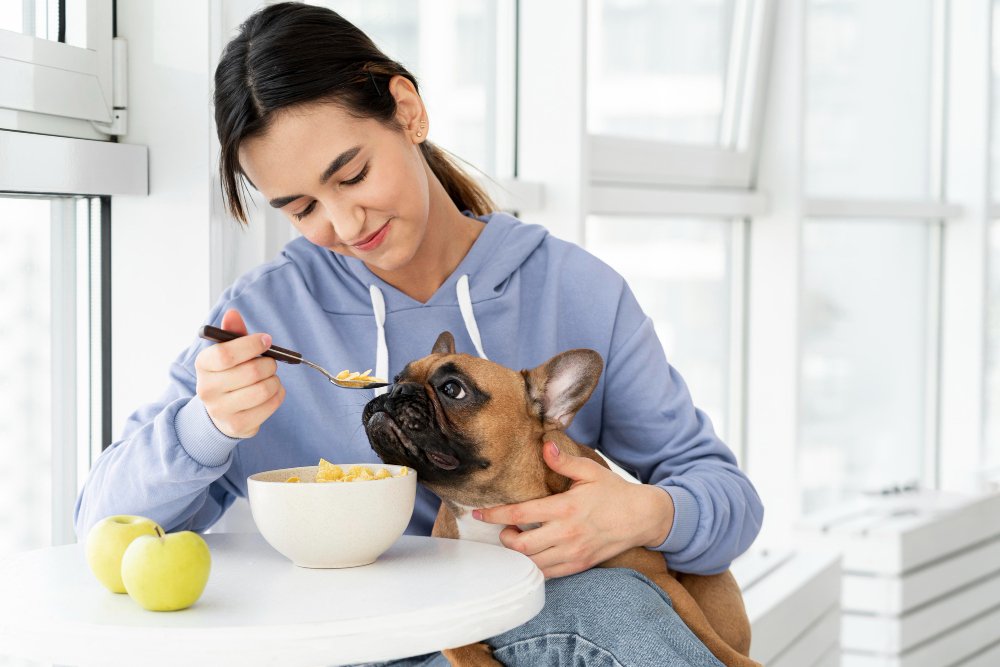As the sun kisses the horizon and the call of the wild beckons, there’s no better companion than your loyal dog. But as you prepare for a camping adventure, it’s essential to consider the comfort and safety of your four-legged friend, especially in the heat.
This guide is your roadmap to ensuring your dog stays cool, hydrated, and happy, no matter how high the mercury rises.
Dogs regulate their body temperature differently than humans. Panting and sweating through paw pads are their primary cooling mechanisms
They are more susceptible to heat than humans and generally, most dogs can tolerate temperatures at or below 80 degrees Fahrenheit.
When the mercury rises above this point, dogs may begin to experience discomfort and the risk of heat-related illnesses increases.
At 90 degrees Fahrenheit, the situation becomes critical, and the risk of heatstroke is significantly higher.
It’s important to note that humidity plays a role too; even at lower temperatures, high humidity can prevent dogs from cooling down effectively through panting.

Factors Affecting Heat Tolerance
The following factors may affect the heat tolerance capacity of the dogs:
- Breed:
Some breeds, especially those with thick fur or short muzzles, are less tolerant of heat.
- Size:
Larger dogs and those that are overweight may struggle more in high temperatures.
- Age:
Very young and elderly dogs have a harder time regulating their body temperature.
- Health:
Dogs with certain health conditions may be more sensitive to heat.

How to Keep Your Dog Cool Inside the Tent?
Tents can become heat traps, with temperatures inside soaring above those outside. Keeping your dog cool inside the tent is crucial, especially during the warmer months.
Without proper ventilation and cooling measures, dogs can quickly overheat. The following strategies should be adopted to create a cooler tent environment:
- Ensure your tent has adequate ventilation. Use a tent with mesh windows that can be opened to create cross-ventilation.
- Invest in a portable tent fan or a battery-operated air conditioner designed for small spaces.
- Reflective tarps or special tent liners can be used to deflect heat away from the tent.
- Use a raised dog bed to increase airflow around your dog, which can help keep them cool.
- Set up your tent in a shaded area or use natural cover to keep it out of direct sunlight.
- Inside the tent, have a designated spot for water. Consider a spill-proof water bowl to keep your dog hydrated without the mess.
- Provide your dog with a cooling mat or a damp towel that’s been chilled in a cooler or a nearby stream.
- Plan for your dog to sleep during the cooler night hours. You might adjust your dog’s sleep schedule slightly to ensure they rest during the hottest part of the day.
- Keep a spray bottle filled with water to mist your dog, helping to lower their body temperature through evaporative cooling.
- Watch for signs of overheating, such as excessive panting, drooling, or lethargy, and take immediate action.
By incorporating these tips into your camping routine, you can create a safe and comfortable environment for your dog inside the tent.
This will not only help prevent heat-related health issues but also ensure that your canine companion enjoys the camping experience as much as you do.
How to Keep Your Dog Cool Outside the Tent?

The outdoors offers a plethora of ways to keep your dog cool, but it also presents unique challenges. Direct sunlight, hot ground surfaces, and the lack of climate control can increase the risk of overheating. The following tips should be kept in mind to keep your dog cool outside the tent:
- Look for areas under trees or create your own shade with a portable canopy.
- Allow your dog to play in a kiddie pool or splash in a stream (if safe and permitted).
- Utilize dog-specific cooling products like cooling vests or bandanas that you can soak in water.
- Limit exercise to early morning or late evening and always carry water for both you and your dog.
- Protect your dog’s paws from hot surfaces with booties or by laying down a cooling mat.
- Take frequent breaks in the shade to prevent your dog from overexerting in the heat.
- Offer your dog frozen treats like ice cubes or frozen peanut butter-filled toys.
- Set up a misting system using a spray bottle or a garden hose with a misting attachment.
- Wet a towel with cool water for your dog to lie on, enhancing the cooling effect as the water evaporates.
- Carry a first-aid kit with supplies to treat heat exhaustion.
- Recognize the signs of heatstroke and have a plan for quick action, including the location of the nearest vet.
By implementing these outdoor cooling strategies, you can ensure your dog enjoys the camping experience while staying safe and comfortable in the heat.
Always be mindful of the temperature and your dog’s behavior, and adjust your activities accordingly to prevent overheating.
Dietary Adjustments for Hot Weather

The following dietary adjustments should be made to keep your dog safe from increasing temperatures:
- Dense carbohydrates like oats, sweet potatoes, and sticky rice can increase metabolic heat production during digestion and thus should be avoided.
- Fatty foods should also be limited as they are harder to digest and can raise body temperature.
- Light proteins such as turkey, duck, duck eggs, rabbit, pork, white fish, and ocean fish are considered cooling.
- Dairy products like cottage cheese and yogurt can also be beneficial.
- Fruits and vegetables with high water content, such as watermelon, apples, and cucumbers, can help with hydration and cooling.
Remember, always ensure any new foods are introduced gradually into your dog’s diet to prevent digestive upset.
It’s also important to consult with your veterinarian before making significant changes to your dog’s diet, especially if they have pre-existing health conditions.
By combining these cooling techniques and dietary adjustments, you can help your dog stay comfortable and cool during the hot camping days.
By being aware of these temperature thresholds and taking appropriate precautions, you can help ensure your dog stays safe and comfortable, even on the hottest days.
Final Thoughts
Camping with your dog is an opportunity to bond and create lasting memories. By taking the necessary precautions to manage the heat, you can ensure that your adventure is safe and enjoyable for both you and your canine companion. So pack your bags, grab the leash, and set off on a journey that keeps your dog’s tail wagging, even in the summer’s warmth.

